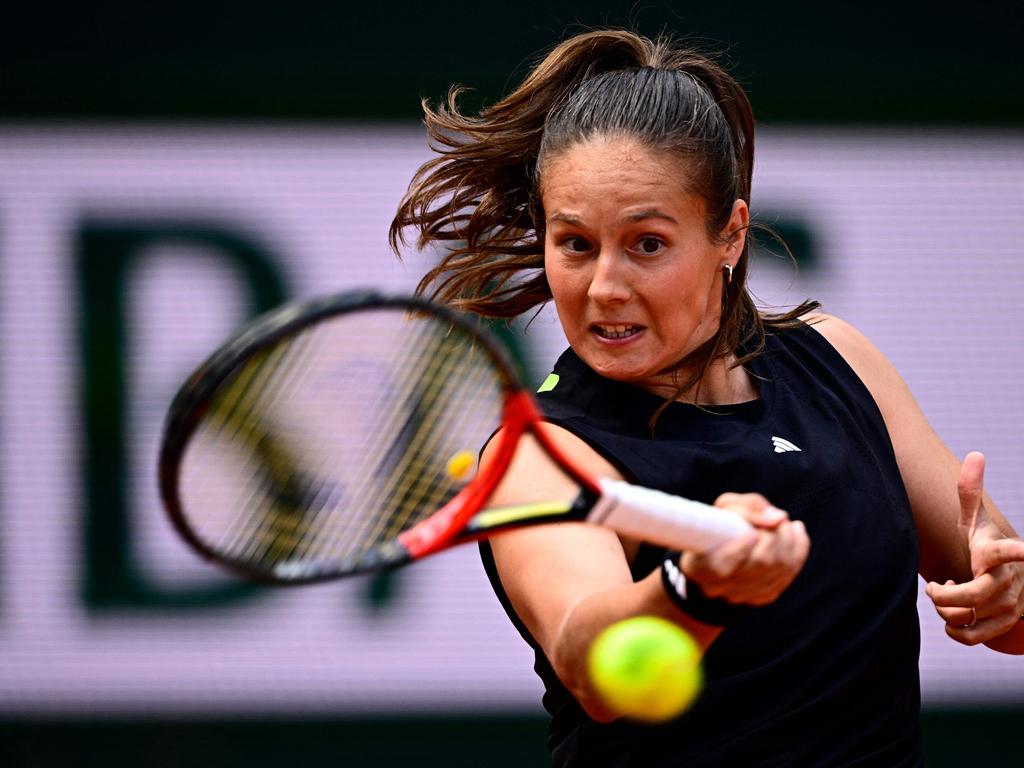Daria Kasatkina’s journey at the French Open came to an end on Monday after a hard-fought loss to fellow Russian-born teenager Mirra Andreeva in the fourth round at Roland Garros. The world No. 6, who is competing under the Australian flag for the first time in a Grand Slam, was defeated 6-3, 7-5 in a 94-minute match that showcased the talent and determination of both players.
Kasatkina, who recently gained permanent residency in Australia, had hoped to become the first Australian woman to reach the quarter-finals at the French Open since Ash Barty’s triumphant run in 2019. Although she fell short of this goal, the 28-year-old expressed pride in representing Australia and appreciated the warm support she received throughout the tournament. “It’s been a good start,” Kasatkina said, reflecting on her debut as an Australian competitor. “I felt super good to step on the court as an Australian player, to feel the support from the stands so many times. On social media, I’m getting a lot of support from Australians who are so happy to welcome me, and that feels really nice.”
Her determination was evident throughout the match, particularly in the second set when Kasatkina staged a fierce comeback, rallying from a 3-1 deficit to lead 5-3 and even earning a set point. Despite her spirited effort, Andreeva’s resilience and aggressive play ultimately saw her close out the match. After the contest, Kasatkina humorously acknowledged the possibility of being called “an Aussie battler,” a nickname synonymous with grit and perseverance in Australian sport.
The match was played in a friendly but competitive spirit, with the two players sharing a unique bond as training partners. Their only previous meeting had been in the final of the Ningbo Open in China the previous October, where Andreeva, then younger and less experienced, suffered a heartbreaking loss after leading in the final set. This time, however, the tables had turned, and Andreeva appeared more mature and confident, successfully putting aside friendship to claim victory.
Kasatkina joked about their training sessions, remarking on Andreeva’s playful claim that she only practiced with her because she “hated” her, highlighting the lighthearted dynamic between them. Both players demonstrated high levels of skill and sportsmanship, thrilling the crowd with long rallies and a variety of shots. One memorable rally lasted 26 shots, showcasing Kasatkina’s tenacity as she chased down seemingly impossible balls.
Andreeva’s performance at Roland Garros has been remarkable. At just 18, she has reached the quarter-finals without dropping a set, becoming the youngest woman this century to reach back-to-back quarter-finals at Roland Garros—a feat last achieved by Martina Hingis in 1998. Her serve, movement, and overall game continue to improve rapidly, with Kasatkina noting that Andreeva seems to grow taller and stronger every week.
Despite the loss, Kasatkina expressed hope that her time practicing with Andreeva did not contribute to her opponent’s growth as a player. Yet, she acknowledged the significant progress Andreeva has made since their last encounter.
Australian interest at Roland Garros remains strong beyond Kasatkina’s run. Junior world No. 2 Emerson Jones advanced to the second round of the girls’ singles with a win over an American opponent, while Olympic men’s doubles champions John Peers and Matt Ebden secured their place in the quarter-finals by defeating the Italian fourth-seeded team.
Kasatkina’s debut at Roland Garros as an Australian marked an important milestone in her career, with the supportive atmosphere and her competitive spirit promising exciting prospects for her future. Meanwhile, Andreeva’s breakthrough performance signals the arrival of a new, formidable talent on the women’s tennis circuit.

